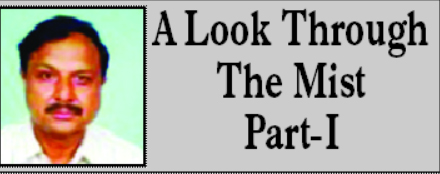Under present system only Govt is obliged to buy Farm Produce on MSP but trader is not

DAYA SAGAR
Indian farmers had gone on protests in 2020 and are again protesting since 13 Feb 2024 . The demands on the agenda of farmer groups are multipronged focusing on multiple socio economic aspects and one of the very agitating demand is on Minimum Support Price( MSP) for farm produce & accord of legal status to it. On date Government does have a system of declaring MSP each season ( Kharif Marketing Season – KMS and Rabi Marketing Season RMS ).Under the present system of increasing the MSP for all mandated Kharif, Rabi food crops and other commercial crops with a return of at least 50 per cent over all India weighted average cost of production from 2018-19 government of Increased MSP for Paddy (common) to Rs 2183 per quintal for KMS 2023-24 from Rs 1310 per quintal in 2013-14 & MSP for Wheat increased from Rs 1400 per quintal in 2013-14 to Rs 2275 per quintal in RMS 2024-25 ) and like . Present Central Government also has a number of schemes/ programmes for direct/ indirect socio economic support to rural people / cultivators/ farmers like Income support to some farmers through PM KISAN, Promotion of organic farming in the country, Micro Irrigation Fund through NABARD, Promotion of Farmer Producer Organizations (FPOs, National Beekeeping and Honey Mission (NBHM) has been launched in 2020 as part of the Atma Nirbhar Bharat Abhiyan to increase productivity of crops through pollination and increase in honey production as an additional source of income, Agricultural mechanization (During the period from 2014-15 to March, 2022, 13,88,314 machines and equipments have been provided to farmers on subsidy basis. 18,824 custom hiring centers, 403 high-tech hubs and 16,791 farm machinery banks have been established, Soil Health Cards to farmers since 2014, National Mission for Edible Oils and Oil Palm (NMEO). The Central Government will compensate farmers through a viability gap payment if price paid by industry is below the viability price up to October, 2037), Agri Infrastructure Fund ( Since inception of AIF in the year 2020, , various agriculture infrastructures were created and some of the infrastructure are at the final stage of completion which include 8215 warehouses, 3076 primary processing units, 2123 custom hiring centres, 992 sorting & grading units, 728 cold store projects, 163 assaying units and around 3632 other kinds of post-harvest management projects and community farming asset), Improvement in farm produce logistics, introduction of Kisan Rail, , Cluster Development Programme:, Creation of a Start-up Eco system in agriculture and allied sector and like. Government of India has initiated measures to enhance income and improve quality of life of farmers including constitution of an Inter-Ministerial Committee in April, 2016 to examine issues relating to “Doubling of Farmers Income (DFI)” and recommending strategies to achieve the same which submitted its final report to the Government in September, 2018 containing the strategy for doubling of farmers’ income through various policies, reforms & programmes.
But the farmer organizations / groups are not satisfied with the present legal status of MSP and the present method of fixation/ calculation of MSP . The farmers have also clubbed some other demands like waiver of loans, meaningful pension for aged farmers and like.
As stated above let us discuss first the MSP issue. The farmers are demanding (i) that MSP should be given legal status i.e no trader / agency should buy the MSP linked farm produce at price less than MSP as fixed by Government (ii) Fixation of MSP on the basis of (C2 cost basis ) of Swaminathan Commission Formulae.
Before fixation of minimum price for the farm produce is discussed further it has to be also examined that the price fixed has also an impact burden on the common consumer which cannot be so simply professed against MSP because nearly 2/3rd Indian population is producer and the burden of the support price has to be borne by the 1/3rd population which does not appear fair to some. Even if government bears some burden in terms of food security to some that also will have to be indirectly shared by the common man in terms of direct/indirect taxes. More so some people who profess against MSP argue that countries like USA do extend such supports / subsidies to agriculturist because their producer population is not more than 1/5th as against atleast 2/3rd in India. The custom of MSP is there in India since 1960s and even in late 1960s a Chief Minister of a Indian state who himself was from Agri family had said during his convocation address in a University that he did not approve MSP in India since 30 percent population can not support 70 percent population but since Union Government was for MSP he too had to go with that. In india over 85 to 87 percent farmers are those who have land ranging from O.3 Hectare to less than 2 Hect and under economic stresses they rush to sell the crop immediately since they need money ( that too in cash ) immediately there by flooding the market where the trader exploits them worth even forcing them to sell 30 percent below the MSP announced by government for government purchase.
Ofcourse in the present system it is only Government who necessarily buys its requirements for buffer stock / public distribution on MSP but the market / trade is not obliged to buy necessarily at MSP and Indian farmer community complains that since government does not buy all produce the trade exploits the needy farmer.
To be continued
(The writer is a Sr Journalist and Social Activist).
